Directions (1-5): Study the following information carefully and answer the given questions.
Eight people i.e. M, N, O, P, Q, R, S and T were born on two different dates i.e. 9th and 18th of March, June, September, and December of the same year but not necessarily in the same order. M was born in a month having 31 days on an even-numbered date. Three people were born between M and T. Number of people who were born before S is the same as the number of people who were born after T. Number of people born between S and M is the same as the number of people born between S and N. Three people were born between N and P. O was born before T. One person was born between O and Q. R was born before O. O was born in the month which has even number of days.
Q1. How many people were born between O and R?
(a) More than three
(b) One
(c) Three
(d) None
(e) Two
Q2. Four of the following five are alike in a certain way and hence form a group. Which is the one that doesn’t belong to that group?
(a) T
(b) R
(c) M
(d) N
(e) P
Q3. Who amongst the following was born in 9th March?
(a) Q
(b) T
(c) S
(d) R
(e) None of these
Q4. How many people were born after T?
(a) Two
(b) One
(c) Three
(d) Four
(e) None of these
Q5. Q was born in which of the following dates?
(a) 18th December
(b) 9th December
(c) 9th June
(d) 9th March
(e) None of these
Q6. How many such pairs of letters are there in the word SEQUENCE each of which has as many letters between them in the word in both forward and backward directions as in the English alphabet?
(a) Three
(b) Two
(c) Four
(d) Five
(e) None
Q7. If it is possible to make a meaningful word, using the third, fourth, seventh and eighth letters of the word ‘APPLICANT’, then what is the fourth letter from the left of the word formed? If no such word be formed, mark the answer as ‘M’. If more than one word can be formed mark the answer as ‘X’.
(a) A
(b) N
(c) P
(d) X
(e) M
Q8. How many such pairs of letters are there in the word PRIVATE each of which has as many letters between them in the word in both forward and backward directions as in the English alphabet?
(a) Three
(b) Two
(c) Four
(d) Five
(e) None
Q9. How many such pairs of letters are there in the word COHERENT each of which has as many letters between them in the word in both forward and backward directions as in the English alphabet?
(a) Three
(b) Two
(c) Four
(d) Five
(e) None
Q10. How many such pairs of letters are there in the word PROVINCE each of which has as many letters between them in the word in both forward and backward directions as in the English alphabet?
(a) One
(b) Two
(c) Four
(d) Five
(e) None
Directions (11-15): In these questions, the relationship between different elements is shown in the statements. These statements are followed by two conclusions.
Q11. Statements: W ≤ S < B, M > S.
Conclusions:
I. B ≥ W
II. M < B
(a) If only conclusion I follows.
(b) If only conclusion II follows.
(c) If either conclusion I or II follows.
(d) If neither conclusion I nor II follows.
(e) If both conclusions I and II follow.
Q12. Statements: S ≥ Y, H < D ≤ S, J = Y
Conclusions:
I. S > J
II. H < J
(a) If only conclusion I follows.
(b) If only conclusion II follows.
(c) If either conclusion I or II follows.
(d) If neither conclusion I nor II follows.
(e) If both conclusions I and II follow.
Q13. Statements: B > T ≥ R < U, N > R = K
Conclusions:
I. B > K
II. T > K
(a) If only conclusion I follows.
(b) If only conclusion II follows.
(c) If either conclusion I or II follows.
(d) If neither conclusion I nor II follows.
(e) If both conclusions I and II follow.
Q14. Statements: M < Z = Y, D ≤ M
Conclusions:
I. D ≤ Y
II. D < Z
(a) If only conclusion I follows.
(b) If only conclusion II follows.
(c) If either conclusion I or II follows.
(d) If neither conclusion I nor II follows.
(e) If both conclusions I and II follow.
Q15. Statements: K > S, L ≤ F, S = L
Conclusions:
I. K > F
II. S ≤ F
(a) If only conclusion I follows.
(b) If only conclusion II follows.
(c) If either conclusion I or II follows.
(d) If neither conclusion I nor II follows.
(e) If both conclusions I and II follow.
Directions (16-20): Study the following data carefully and answer the questions accordingly.
Seven people live in an eight-story building. One person lives on one floor. The ground floor is numbered 1 and the top floor is numbered 8. One of the floors is vacant. There are six floors between T and W. Three people live between F and T. F does not live on an even-numbered floor. S lives below F but not immediately. Two people live between H and S. H does not live on an even-numbered floor. K lives below U.
Q16. Who lives immediately above F?
(a) S
(b) W
(c) The one, who lives below S
(d) H
(e) No one
Q17. U lives in which of the following floor?
(a) Sixth floor
(b) Fifth floor
(c) Fourth floor
(d) Third floor
(e) None of these
Q18. Which of the following floors is vacant?
(a) Seventh
(b) Sixth
(c) Fifth
(d) Fourth
(e) None of these
Q19. If all of them are arranged in alphabetical order from the top to the bottom at the occupied floors, then how many of them will remain at the same place?
(a) Three
(b) Two
(c) Four
(d) One
(e) None of these
Q20. Find the odd one.
(a) U, W
(b) F, S
(c) K, U
(d) S, T
(e) H, U
Solutions
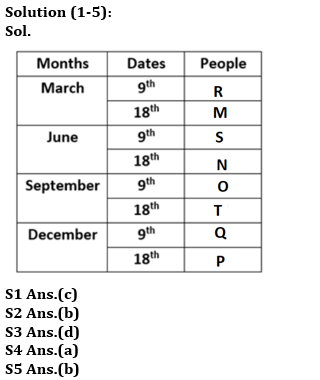
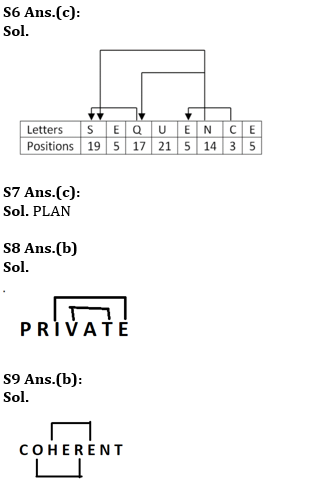
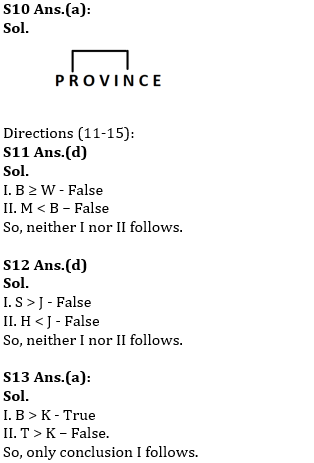
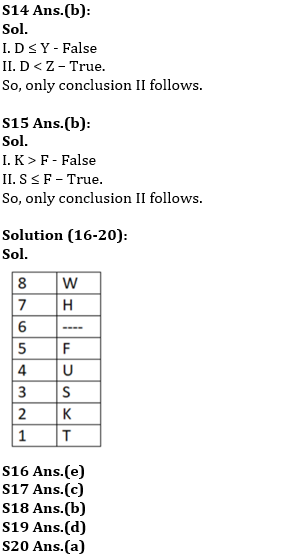
Click Here to Register for Bank Exams 2022 Preparation Material


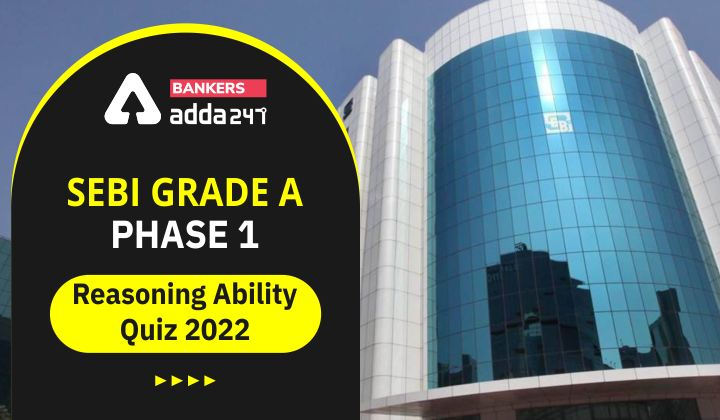


 GA Capsule for SBI Clerk Mains 2025, Dow...
GA Capsule for SBI Clerk Mains 2025, Dow...
 The Hindu Review October 2022: Download ...
The Hindu Review October 2022: Download ...
 30 Days Study Plan to Crack SBI Clerk 20...
30 Days Study Plan to Crack SBI Clerk 20...





